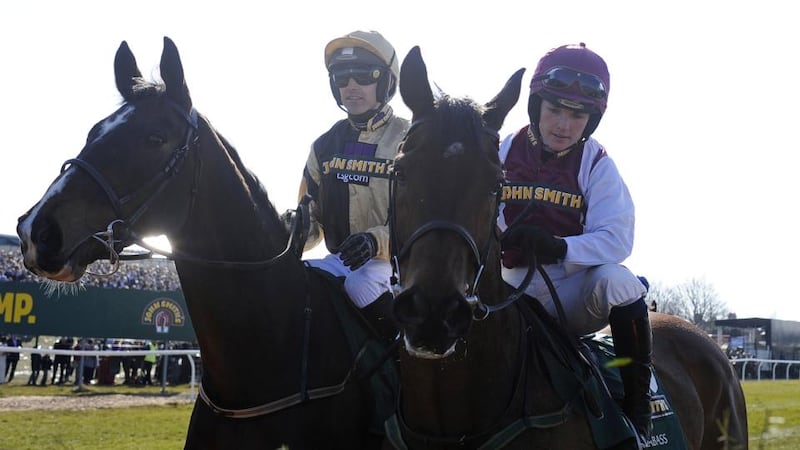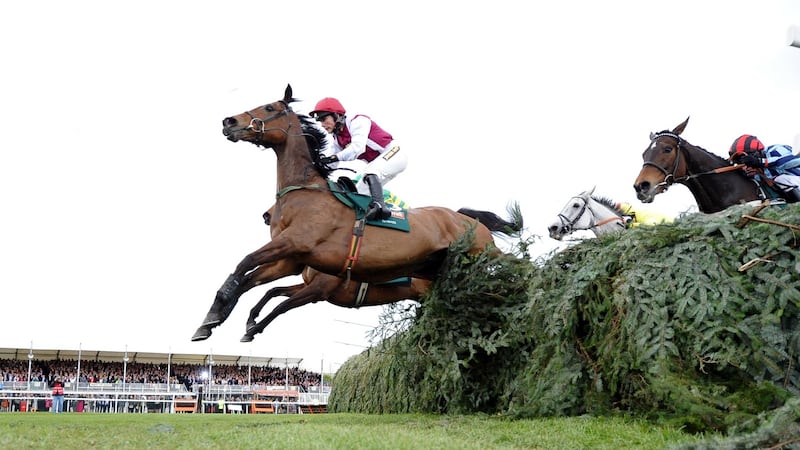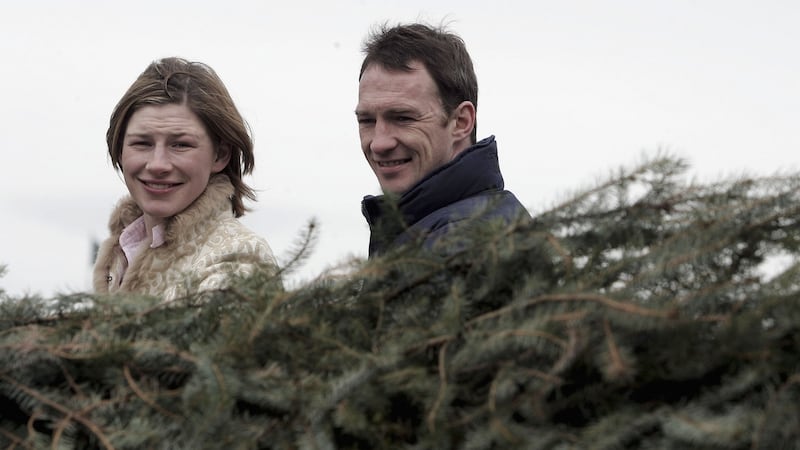It's 40 years since Charlotte Brew became the first woman to ride in the Grand National. Her feat got overlooked when Red Rum, perhaps the most famous horse in racing history, won the world's most famous race for a third time. Nothing - no combination of pile-up, cock-up or bomb-scare - could compete for attention with that.
The National continues to resonate with the general public in these islands like no other race. Even those barely aware of racing’s existence for 364 days of the year have a bet on the sport’s shop-window event. Proof that its impact is like no other comes from how generations of the public still reference Red Rum when pressed to name a racehorse.
It’s easy to imagine then a potentially seismic impact far beyond racing should a woman ever ride the winner of the Grand National. Even in the race’s storied history, a female jockey winning would be a singular moment, a victory on many levels but perhaps especially for the principle that talent and courage are blind to gender.
The idea of a woman riding in the National 40 years ago was a curio
That that should be obvious doesn’t make it so, and especially in racing, the one major sport where male and female compete on an equal footing. If it sounds like an equality ideal then the day-to-day reality for many female jockeys continues to make it a double-edged sword, so much so that French racing has introduced a controversial weight allowance for women to encourage opportunity.
Reaction to that has run the gamut from cautious welcome to outrage, but a woman coming out best in the toughest race of all would be the most public riposte imaginable to allowances of any kind having to be made. In many ways, however, a much more substantial victory has already been achieved. The idea of a woman riding in the National 40 years ago was a curio: the idea of a woman winning the National now is perfectly realistic.
Katie Walsh’s argument is that it’s difficult for anyone to win the National - male or female. It’s as hard to argue with as her view that no-one seriously doubts anymore a woman’s capability of doing so simply because of her sex. Now it’s about opportunity, which is another argument. But the idea of a female jockey on your National pick being an automatic negative is old hat.
It's a colossal shift in perception and it's largely the doing of Walsh and Nina Carberry. Determined to be judged solely on their merits as jockeys, those merits have transformed the racing landscape.
They’re sisters-in-law now and Carberry will be watching from the sidelines on Saturday, waiting to give birth to her first child next month. Between them they have ridden in the National 10 times already. Significantly, no other women have ridden in the race for over a decade.
In that same decade both have tasted success at the Cheltenham festival, each won an Irish Grand National, and consistently added to glorious family racing histories which are entwined with Aintree National success. It would be a dubious accolade in any other field, but rarely if ever have two women blended so seamlessly into male company.

Neither appears particularly comfortable with the idea of a pioneering role for themselves but the legacy of their achievements is stamped all over a new generation of female riders. Last month all three amateur rider races at the Cheltenham festival were won by female jockeys. Just as remarkable was how it was a feat barely remarked upon.
"There are more girls coming through and riding as professionals now in Ireland, like Rachel Blackmore and Katie O'Farrell. They're doing their own thing, just as we did, just trying to make the most of the opportunities you get.
“It’s about getting experience and that’s tough for guys as well as girls. You have to be good. And you’re either good or you’re not,” Carberry says.

Her sister-in-law maintains a similarly straightforward view. Walsh has got closer than any woman to Aintree National glory, finishing third on Seabass in 2012. She is set for a fifth ride in the race aboard Wonderful Charm on Saturday, employed by Britain's champion trainer Paul Nichols.
“I never in a million years would have thought I’d have got to ride in four Nationals by now. Because there’s a host of riders who’ve never ridden in the National and they’re well capable too. It’s all about trying to get on these horses in the first place and that’s the same if you’re male or female,” she maintains.
Walsh is likely to be the only woman riding in Saturday’s big race. She downplays how she and Carberry have been the only female presence in the race for over a decade, pointing to how modern safety requirements include a clause that every jockey has to have ridden at least 10 winners over fences prior to lining up in the National.
“I would have lost a lot of money betting on Rachel Blackmore having ridden more than 10 winners. It’s very hard if you’re an amateur to have ridden 10 winners over fences. You don’t get those opportunities. The first year I rode Seabass I only scraped in.
“You look at someone like Lisa O’Neill: she’s won a Kerry National and the four-miler at Cheltenham, so it’s hard to believe she isn’t able to ride in the National. The 10 winners is probably not a bad thing since they’re probably under pressure from the animal-rights crew. But it does make it very hard for amateurs especially,” Walsh adds.
A curiosity of Irish racing is that riding as a top amateur is a full-time job, which means both women bring a professional objectivity to how the famous National fences have been modified in recent years. To critics it has turned the race into just another long-distance handicap. To others it has saved the National from potential public outcry.
“Time moves on and the changes are for the better. They want to keep it as high-profile as they can,” Carberry says. “It’s been made safer for horses and riders but it still takes jumping.”
Walsh agrees and points out that horses prone to mistakes still have no chance of becoming a National winner.
“It’s funny how some of the fences that don’t have famous names like Bechers or The Chair are actually huge. The third fence, the first ditch, is a monster. If you get over that you’re happy. Then you come down to Bechers, Foinavon and the Canal Turn which can turn into a bottleneck. But then on the far side there are a couple of more ditches that are absolute whoppers. Maybe it’s because they don’t have famous names that people don’t notice them. But they take jumping,” she says.

They also represent a challenge that makes the pluck involved in jumping them seem all the more remarkable. It’s the sort of pluck that makes no allowances for gender and Walsh argues that she doesn’t require any sort of allowance along the lines of the new French initiative in order to compete.
“I think that was driven by the PMU (French Tote System) and betting. Punters in cafes weren’t betting on female riders so they were losing money. They want to make it more attractive to bet on female riders. But then it’s only in certain races, not graded races, so I’m not sure about it. I like the way it is here. It’s unique,” she says.
I don't see myself as a female jockey, just a jockey
The National remains unique too. The nature of the media game means when, or if, a woman ever rides the winner it will inevitably be portrayed through the prism of gender. But Walsh and Carberry have already secured something with a significance far beyond a single race no matter how lustrous it is.
“I don’t see myself as a female jockey, just a jockey,” Rachel Blackmore said recently. “I think there’s no difference anymore. Nina and Katie got rid of any kind of stigma with their achievements.”
Which is some legacy whichever way you choose to look at it.













